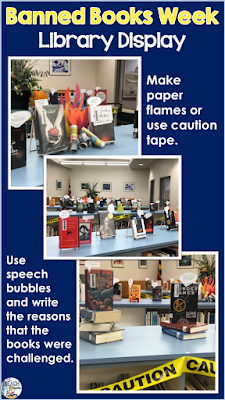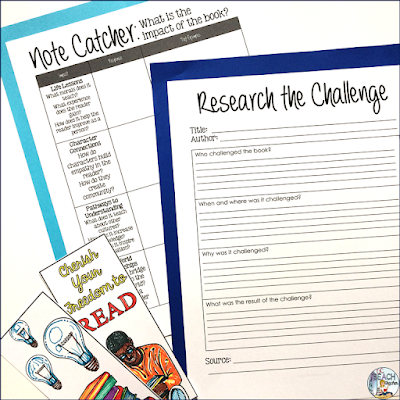It’s true that many teens are notoriously rebellious and can be difficult to teach at times. However, a strategic teacher can tap into their desire to question authority and pique their interest in reading by using challenged books. These books capitalize on their desire to learn about controversial topics. This is especially true when motivating students to read classics and books from the cannon.
For instance, when I use literature circles in my classroom, I often tease students to read the novel, The Catcher in the Rye by J.D. Salinger. I tell them that it has often been banned in schools for vulgar language and mature topics. I also tell them that the protagonist, Holden Caufield, has a defiant attitude and immediately gets expelled from school at the start of the novel. This usually grabs their attention, and they often choose Salinger’s book for their group's reading.
Banned Books Week, from September 26 - October 2, is an excellent time to introduce some commonly challenged books. There are myriad resources to help you excite teens in their reading of these books. There are also tools to help you if a book that you are teaching is challenged, such as when I have taught To Kill a Mockingbird. Unfortunately, this is becoming more common in our current culture.
Do you want to get your students engaged in Banned Book Week? Here are some activities that you may be interested in:
Virtual Read-Out Videos
In one promotion from the ALA, readers create YouTube videos and read excerpts from challenged books to declare their support for freedom of speech.
I modeled for my students in previous years.

Should This Book Be Banned?
Here is a quick and easy free activity your students can do to connect argument writing to their reading of a challenged book. The argument writing prompt asks students to brainstorm evidence, counterarguments, and refutation for a claim about a banned book.
You can extend their learning with this book rationale activity, too. First, students research why their banned books have been challenged, and then they search for text examples showing the books' educational value. For fun, they can make bookmarks after they write their rationales.
Do you want to get your students engaged in Banned Book Week? Here are some activities that you may be interested in:
Virtual Read-Out Videos
In one promotion from the ALA, readers create YouTube videos and read excerpts from challenged books to declare their support for freedom of speech.

Make a Display
Have your students create displays that educate their classmates about banned books. In years past, the librarians at my high school displayed books from our media center which have been challenged. In the display, they included reasons for the challenges with each displayed book. It was easy for them to decorate with caution tape and construction paper.Collaborate with Your Media Center
I also asked my media center specialist to introduce my students to banned books. She created an engaging activity in which students walked around the room looking at books that had been challenged over the years. First, they counted how many of these books they had read, and next they chose two to research. They searched for information on why the selected books had been challenged. Finally, they shared their results and were amazed. All of them were shocked that the Harry Potter series was on the list!Should This Book Be Banned?
Here is a quick and easy free activity your students can do to connect argument writing to their reading of a challenged book. The argument writing prompt asks students to brainstorm evidence, counterarguments, and refutation for a claim about a banned book.
You can extend their learning with this book rationale activity, too. First, students research why their banned books have been challenged, and then they search for text examples showing the books' educational value. For fun, they can make bookmarks after they write their rationales.
The Comic Book Legal Defense Fund
Freedom to Read Foundation
NCTE Intellectual Freedom Center
Gather more ideas from these other teacher bloggers here:
Ways to Incorporate Lessons on Banned Books
Teachers can also request rationales and report a censorship incident for classroom texts if they face a challenge. What do you do with banned books in your classroom? Please share in the comments below.







No comments:
Post a Comment